Ingrown Toenail Treatment & Care: What to Expect, When to Act, and How to Prevent It
Suffering from an ingrown toenail? Learn when to get help, what treatment involves, and how to prevent future nail pain. Relief is simpler than you think.
You don’t have to live with nail pain, and no, fixing it doesn’t have to hurt. Ingrown toenails are one of the most common issues podiatrists treat, yet many people delay getting help. Whether it’s fear, embarrassment, or assuming it’s ‘not serious’, waiting often makes things worse. The good news? Treatment is gentle, fast, and often provides immediate relief.
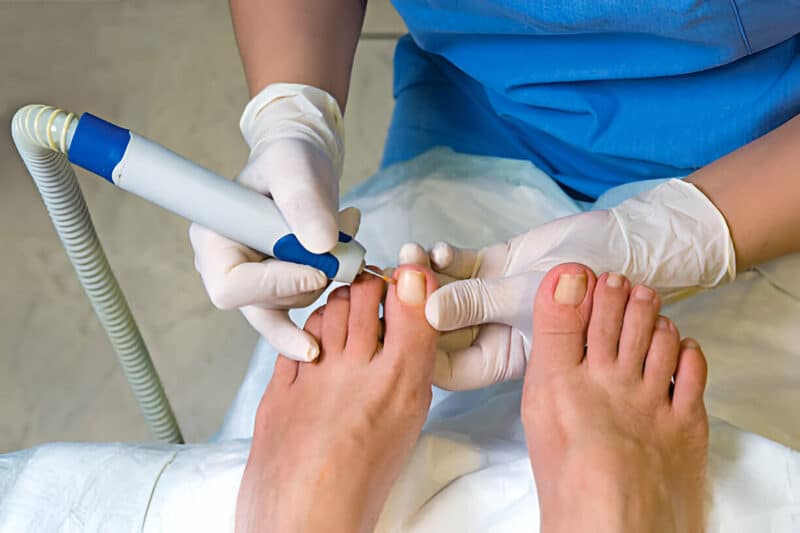
Small Problem, Big Disruption
“It’s just a toenail… until it hurts every time you put on shoes.”
If you’ve ever winced while walking, avoided certain shoes, or Googled “how to fix an ingrown nail at home,” you’re not alone. These small nail issues can cause big discomfort. At Greater Western Health, we’ve seen everything from first-time flare-ups to long-term DIY disasters.
But here’s the truth: professional help is gentle, effective, and far less scary than you think. And for recurring cases, there are long-term solutions that mean you won’t have to keep dealing with this over and over again.
What Causes Ingrown Toenails (And How to Spot One Early)
Most ingrown nails are caused by everyday things you might not realise are a problem, such as:
- Cutting nails too short or curved
- Wearing tight or ill-fitting shoes
- Toe injuries
- Naturally curved nail shape (genetic)
- Poor foot hygiene or nail care routines
According to our Hawkesbury podiatrists, early signs to watch for include:
- Tenderness or pressure around the nail edge
- Swelling or redness in the surrounding skin
- Pain when putting on socks or shoes
- A visible curve inward (nail growing into the skin)
- Fluid or pus, indicating infection in some cases
If you catch it early, you may avoid more aggressive treatments later.
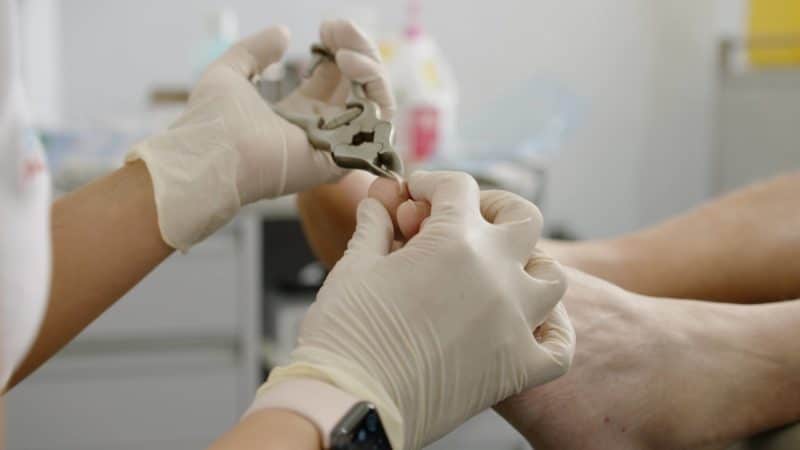
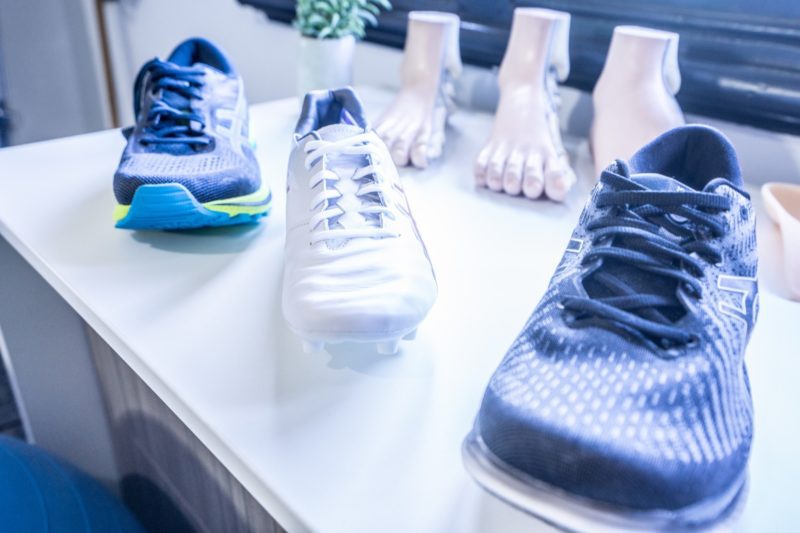
When Home Remedies Work (and When They Don’t)
For mild cases, at-home care can ease discomfort. Soaking your foot in warm salty water and dressing the toe can help reduce inflammation. But there’s a limit.
“The biggest mistake we see is when people try to cut the nail down the side themselves,” says one Greater Western Health podiatrist. “They often create jagged edges or push the nail deeper, leading to infection.”
When to seek professional care:
- Pain is worsening or not improving after a few days
- The nail area is bleeding, infected, or oozing
- You’ve had more than one ingrown in the same spot
- You’re diabetic or have poor circulation
If you’ve had the problem before, it’s always better to book in sooner than later. Catching it early means gentler treatment.
What Happens During Professional Treatment
There’s a lot of anxiety around treating ingrown nails, but the process is surprisingly quick and comfortable.
Here’s what to expect:
- Assessment: Your podiatrist will examine the nail and surrounding tissue.
- Conservative care: For mild cases, they’ll gently remove the offending edge and reshape the nail.
- Dressing: If there’s bleeding or swelling, the area will be dressed to prevent infection.
- Anaesthetic option: If needed, a local anaesthetic can be used to numb the toe, making the procedure completely pain-free.
For recurring cases, Partial Nail Avulsion (PNA) is the gold standard. This minor procedure removes part of the nail root to prevent regrowth in the problematic edge. No stitches are needed, and most people are back in regular shoes in a day or two.
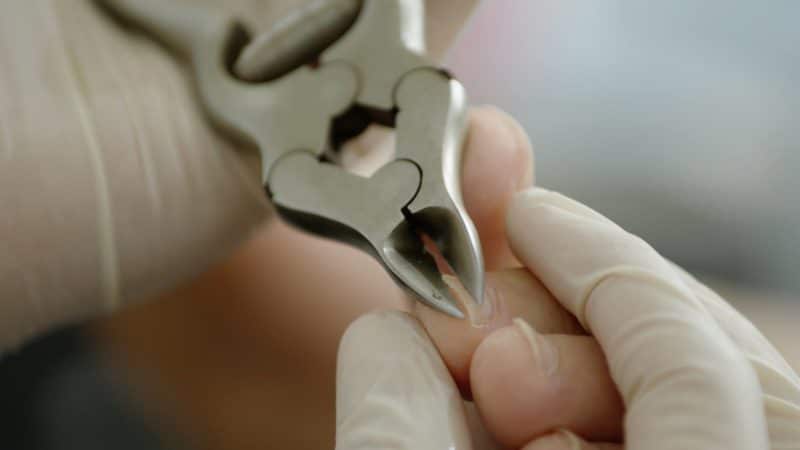
Preventing Future Nail Issues
Here’s how to avoid being stuck in the nail-pain cycle again:
Smart nail care
- Trim toenails straight across, not curved
- Avoid cutting too short
- Don’t dig into the corners of the nail
Shoe choices matter
- Look for shoes with plenty of room in the toe box
- Avoid narrow or pointed shoes if you’re prone to ingrown nails
Regular checks if you’re high-risk
People with diabetes, poor circulation, or immune issues should see a podiatrist every 8–10 weeks for nail care. Annual neurovascular assessments help prevent complications like infection or ulceration.
When Nail Pain Isn’t Just an Ingrown Nail
Not all nail pain is caused by an ingrown nail. Sometimes it’s something else entirely:
- Fungal nail infections (discoloured, thickened nails)
- Trauma damage (lifting or misshapen nails)
- Psoriatic nail changes
- Chronic paronychia (infection of the nail fold)
These conditions can look very similar, but require different treatment. A podiatrist can assess your nail and get you on the right path, whether it’s a trim and file or a prescription antifungal.
“Education is key,” says our team. “We often file down fungal nails to help treatments work better, but it starts with identifying what you’re dealing with.
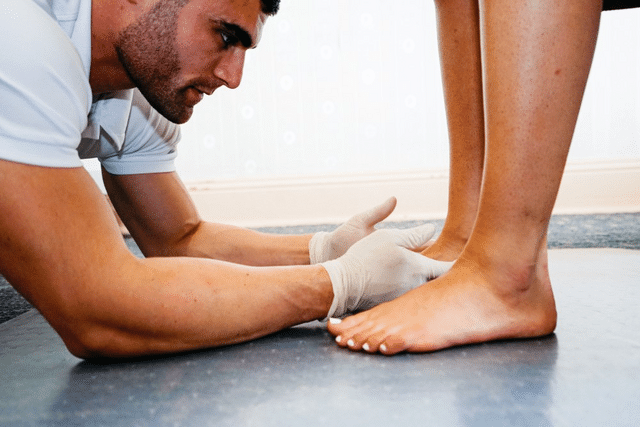
You Don’t Have to Live With Nail Pain
Whether you’ve just noticed tenderness or you’ve been managing recurring issues for years, there’s a better way. Professional podiatry care is gentle, quick, and most importantly, it relieves pain fast. Want to know what treatment’s right for you? Make an Appointment with our team and get back to pain-free steps.
WE ARE PROUD PARTNERS OF




